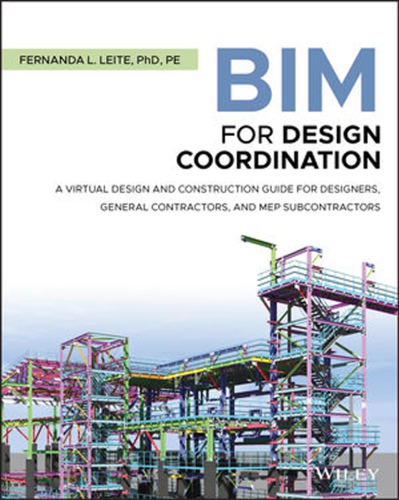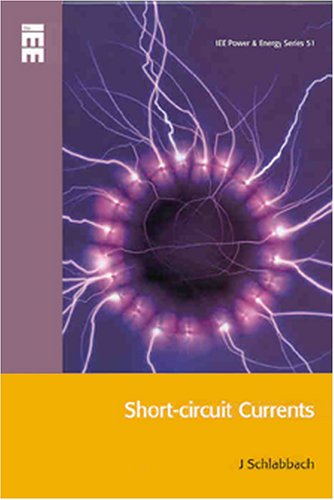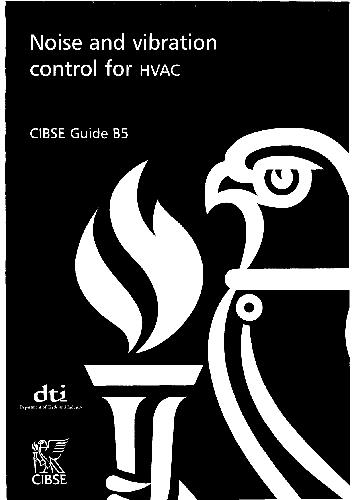| Book Name: | [PDF] Mechanical Vibrations Theory and Applications By Graham Kelly |
| Category: | Vibration |
| Language: | English |
| Format: | |
| Free Download: | Available |
Mechanical Vibrations Theory and Applications :: By Graham Kelly :: Book and Solution :: Engineers apply mathematics and science to solve problems. In a traditional undergraduate engineering curriculum, students begin their academic career by taking courses in mathematics and basic sciences such as chemistry and physics. Students begin to develop basic problem-solving skills in engineering courses such as statics, dynamics, mechanics of solids, fluid mechanics, and thermodynamics. In such courses, students learn to apply basic laws of nature, constitutive equations, and equations of state to develop solutions to abstract engineering problems.
Vibrations is one of the first courses where students learn to apply the knowledge obtained from mathematics and basic engineering science courses to solve practical problems.
While the knowledge about vibrations and vibrating systems is important, the problem-solving skills obtained while studying vibrations are just as important.
The objectives of this book are twofold: to present the basic principles of engineering vibrations and to present them in a framework where the reader will advance his/her knowledge and skill in engineering problem solving.
This book is intended for use as a text in a junior- or senior-level course in vibrations. It could be used in a course populated by both undergraduate and graduate students.
The latter chapters are appropriate for use as a stand-alone graduate course in vibrations. The prerequisites for such a course should include courses in statics, dynamics, mechanics of materials, and mathematics using differential equations.
Some material covered in a course in fluid mechanics is included, but this material can be omitted without a loss in continuity.
Mechanical Vibrations Theory and Applications Kelly Solutions Manual PDF

Mechanical Vibrations Theory and Applications Book PDF
Book Contents
Introduction
The Study of Vibrations
Mathematical Modeling
Generalized Coordinates
Classification of Vibration
Dimensional Analysis
Simple Harmonic Motion
Review of Dynamics
Two Benchmark Examples
Modeling of Sdof Systems
Introduction
Springs
Springs in Combination
Other Sources of Potential Energy
Viscous Damping
Energy Dissipated by Viscous Damping
Inertia Elements
Free-Body Diagram Method
Equivalent Systems Method
Benchmark Examples
Free Vibrations of Sdof Systems
Standard Form of Differential Equation
Free Vibrations of an Undamped System
Underdamped Free Vibrations
Critically Damped Free Vibrations
Overdamped Free Vibrations
Other Forms of Damping
Harmonic Excitation of Sdof Syatems
Forced Response of a Viscously Damped System
Frequency-Squared Excitations
Response Due to Harmonic Excitation of Support
Vibration Isolation
Practical Aspects of Vibration Isolation
Multifrequency Excitations
Seismic Vibration Measuring Instruments
Systems with Coulomb Damping
Systems with Hysteretic Damping
Benchmark Examples
Further Examples
Transient Vibrations of Sdof Systems
Derivation of Convolution Integral
Response Due to a General Excitation
Transient Motion Due to Base Excitation
Numerical Methods
Vibration Isolation for Short Duration Pulses
Chapter Summary
Two Degree-of-Freedom Systems
Derivation of the Equations of Motion
Natural Frequencies and Mode Shapes
Free Response of Undamped Systems
Harmonic Response of Two Degree-Of-Freedom Systems
Sinusoidal Transfer Function
Damped Vibration Absorbers
Benchmark Examples
Modeling of Sdof Systems
Derivation of Differential Equations Using the Free-Body Diagram Method
Matrix Formulation of Differential Equations for Linear Systems
Stiffness Influence Coefficients
Lumped-Mass Modeling of Continuous Systems
Further Examples
Chapters in depth
Chapter 1 is introductory, reviewing concepts such as dynamics, so that all readers are familiar with the terminology and procedures.
Chapter 2 focuses on the elements that comprise mechanical systems and the methods of mathematical modeling of mechanical systems.
It presents two methods of the derivation of differential equations: the free-body diagram method and the energy method, which are used throughout the book.
Chapters 3 through 5 focus on single degree-of-freedom (SDOF) systems.
Chapter 6 is focused solely on two degree-of-freedom systems.
Chapters 7 through 9 focus on general multiple degree-of-freedom systems.
Chapter 10 provides a brief overview of continuous systems.
The topic of Chapter 11 is the finite-element methods, which is a numerical method with its origin in energy methods, allowing continuous systems to be modeled as discrete systems.
Chapter 12 introduces the reader to nonlinear vibrations, while Chapter 13 provides a brief introduction to random vibrations.
The references at the end of this text list many excellent vibrations books that address the topics of vibration and design for vibration suppression.
Download also [PDF] Mechanical Vibration by VP Singh
There is a need for this book, as it has several unique features:
Two benchmark problems are studied throughout the book. Statements defining the generic problems are presented in Chapter 1.
Assumptions are made to render SDOF models of the systems in Chapter 2 and the free and forced vibrations of the systems studied in Chapters 3 through 5, including vibration isolation.
Two degree-of-freedom system models are considered in Chapter 6, while MDOF models are studied in Chapters 7 through 9.
A continuous-systems model for one benchmark problem is considered in Chapter 10 and solved using the finite-element method in Chapter 11.
A random-vibration model of the other benchmark problem is considered in Chapter 13. The models get more sophisticated as the book progresses.
Mechanical vibrations : theory and applications PDF
Author(s): S Graham Kelly
Publisher: Cengage Learning , Year: 2012
ISBN: 9781439062142,1439062145
Solution : Mechanical Vibrations Theory and Applications Kelly Solutions Manual PDF
Book : Mechanical Vibrations Theory and Applications Kelly PDF
Related Results : mechanical vibrations theory and application by graham kelly,mechanical vibrations theory and applications by s graham kelly free download,mechanical vibrations theory and applications graham kelly,mechanical vibrations theory and applications kelly,mechanical vibrations theory and applications kelly pdfmechanical vibrations theory and applications kelly solutions manual pdf,
Related More Books
See More POST On : Engineering Books









![[PDF] Draw Buildings and Cities in 15 Minutes Draw Buildings and Cities in 15 Minutes pdf](https://www.freepdfbook.com/wp-content/uploads/2021/06/Draw-Buildings-and-Cities-in-15-Minutes-218x150.jpg)








![[PDF] Digital Image Processing An Algorithmic Introduction Using Java Digital Image Processing An Algorithmic Introduction Using Java](https://www.freepdfbook.com/wp-content/uploads/2022/06/Digital-Image-Processing-An-Algorithmic-Introduction-Using-Java.jpg)




![[PDF] 43 Years JEE ADVANCED + JEE MAIN Chapterwise & Topicwise Solved Papers 43 Years JEE ADVANCED (1978-2020) + JEE MAIN Chapterwise & Topicwise Solved Papers Physics PDF](https://www.freepdfbook.com/wp-content/uploads/2022/03/43-Years-JEE-ADVANCED-1978-2020.jpg)

![[PDF] Problems in Physical Chemistry for JEE (Main & Advanced) Problems in Physical Chemistry for JEE (Main & Advanced) Free PDF Book Download](https://www.freepdfbook.com/wp-content/uploads/2022/03/Problems-in-Physical-Chemistry-for-JEE-Main-Advanced.jpg)
![[PDF] Engineering Physics (McGraw Hill)](https://www.freepdfbook.com/wp-content/uploads/2021/05/bafc8c2685bb6823a9c56134f7fba5df.jpeg)

![[PDF] Engineering Chemistry By Shashi Chawla](https://www.freepdfbook.com/wp-content/uploads/2022/05/Theory-And-Practicals-of-Engineering-Chemistry-By-Shashi-Chawla-free-pdf-book.jpeg)
![[PDF] Chemistry: An Introduction to Organic, Inorganic & Physical Chemistry Chemistry: An Introduction to Organic, Inorganic & Physical Chemistry](https://www.freepdfbook.com/wp-content/uploads/2022/04/Chemistry-An-Introduction-to-Organic-Inorganic-Physical-Chemistry.jpg)
![[PDF] Essentials of Physical Chemistry Essentials of Physical Chemistry Free PDF Book by Bahl](https://www.freepdfbook.com/wp-content/uploads/2022/04/Essentials-of-Physical-Chemistry-bahl.jpg)
![[PDF] Biological control of plant-parasitic nematodes: soil ecosystem management in sustainable agriculture Biological control of plant-parasitic nematodes: soil ecosystem management in sustainable agriculture](https://www.freepdfbook.com/wp-content/uploads/2022/05/Biological-control-of-plant-parasitic-nematodes-soil-ecosystem-management-in-sustainable-agriculture.jpg)
![[PDF] Human Anatomy: Color Atlas and Textbook Human Anatomy: Color Atlas and Textbook Free PDF Book](https://www.freepdfbook.com/wp-content/uploads/2022/05/Human-Anatomy-Color-Atlas-and-Textbook.jpg)
![[PDF] Concepts of Biology Book [Free Download]](https://www.freepdfbook.com/wp-content/uploads/2022/05/Concepts-of-Biology.jpg)
![[PDF] Essentials of Biology [Free Download] Essentials of Biology Free PDF BOok Download](https://www.freepdfbook.com/wp-content/uploads/2022/05/Essentials-of-Biology-Free-PDF-Book-Downlaod.jpg)
![[PDF] Human Biology Book [Free Download]](https://www.freepdfbook.com/wp-content/uploads/2022/05/PDF-Human-Biology-Book-Free-Download.jpg)


